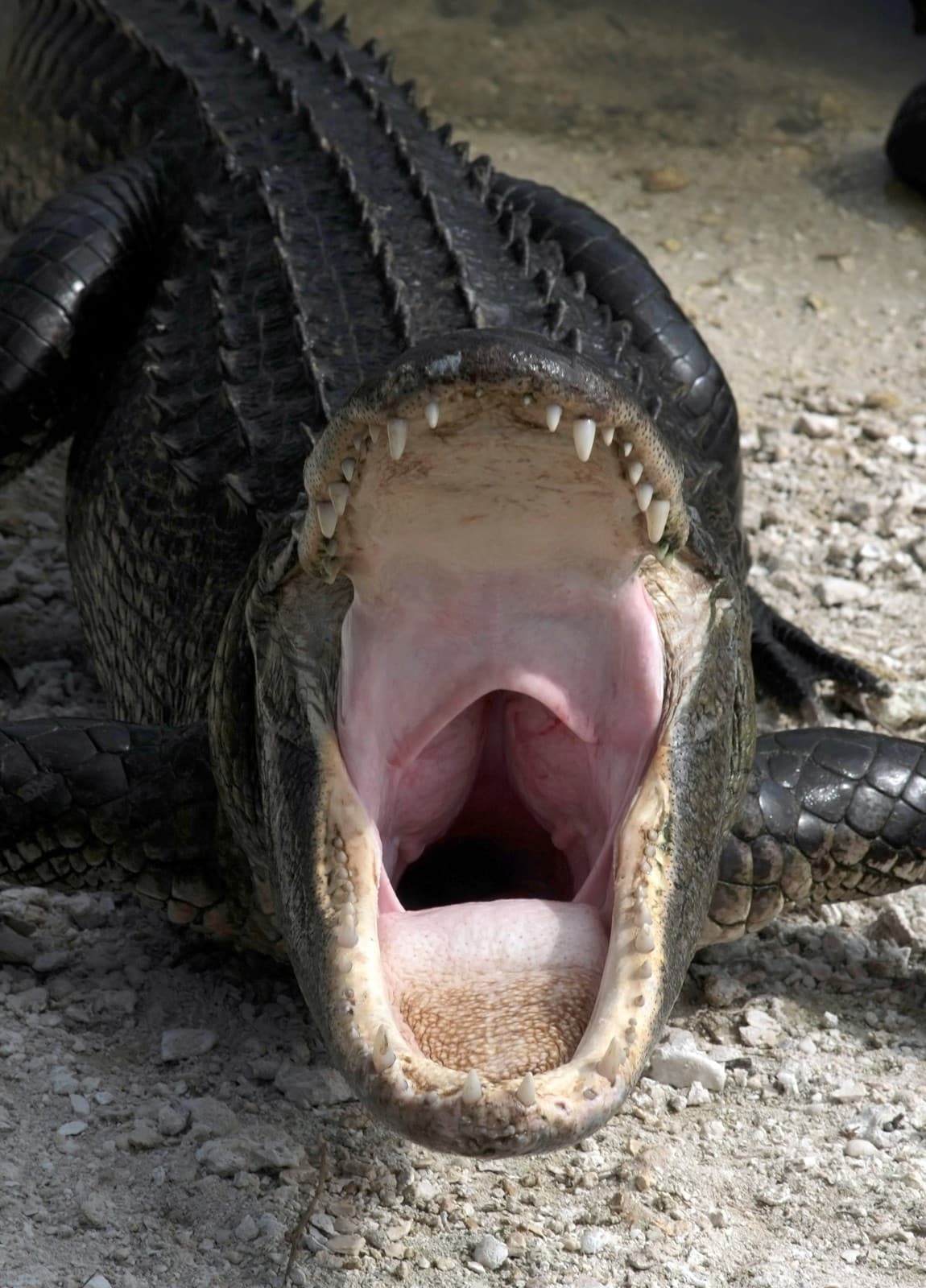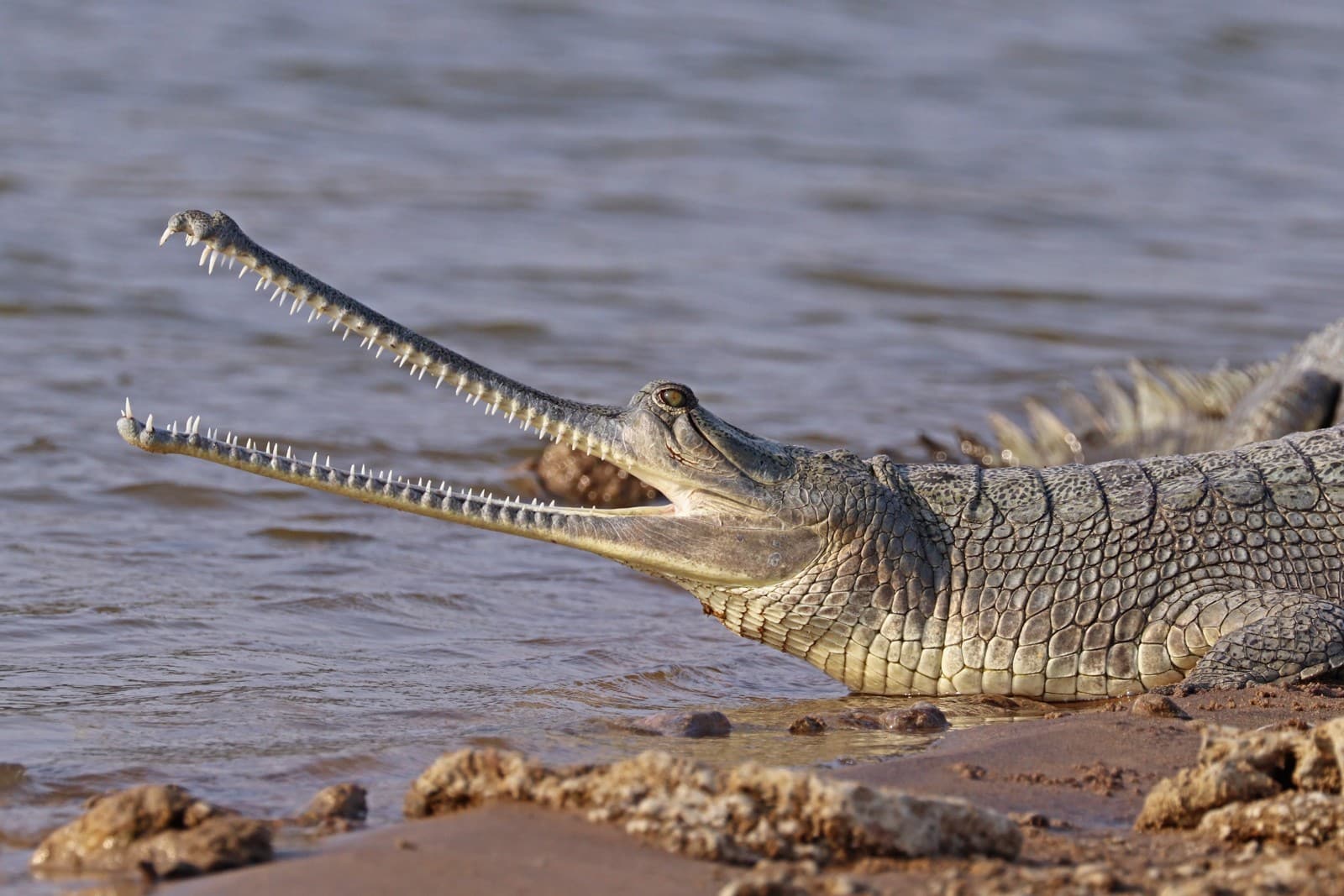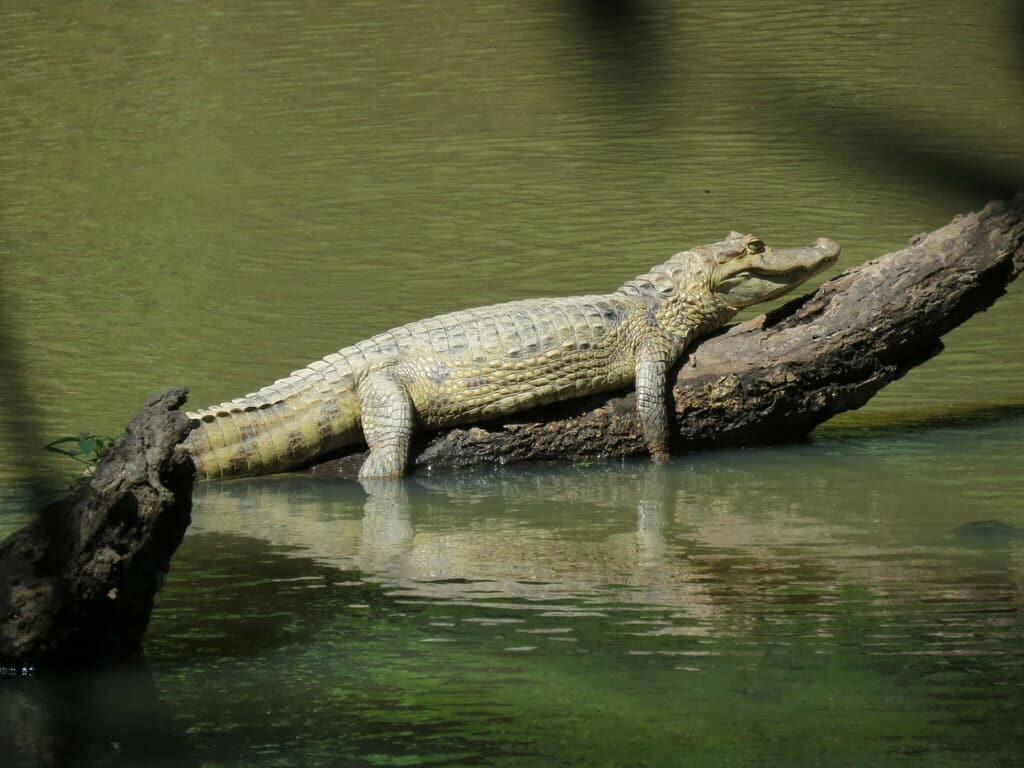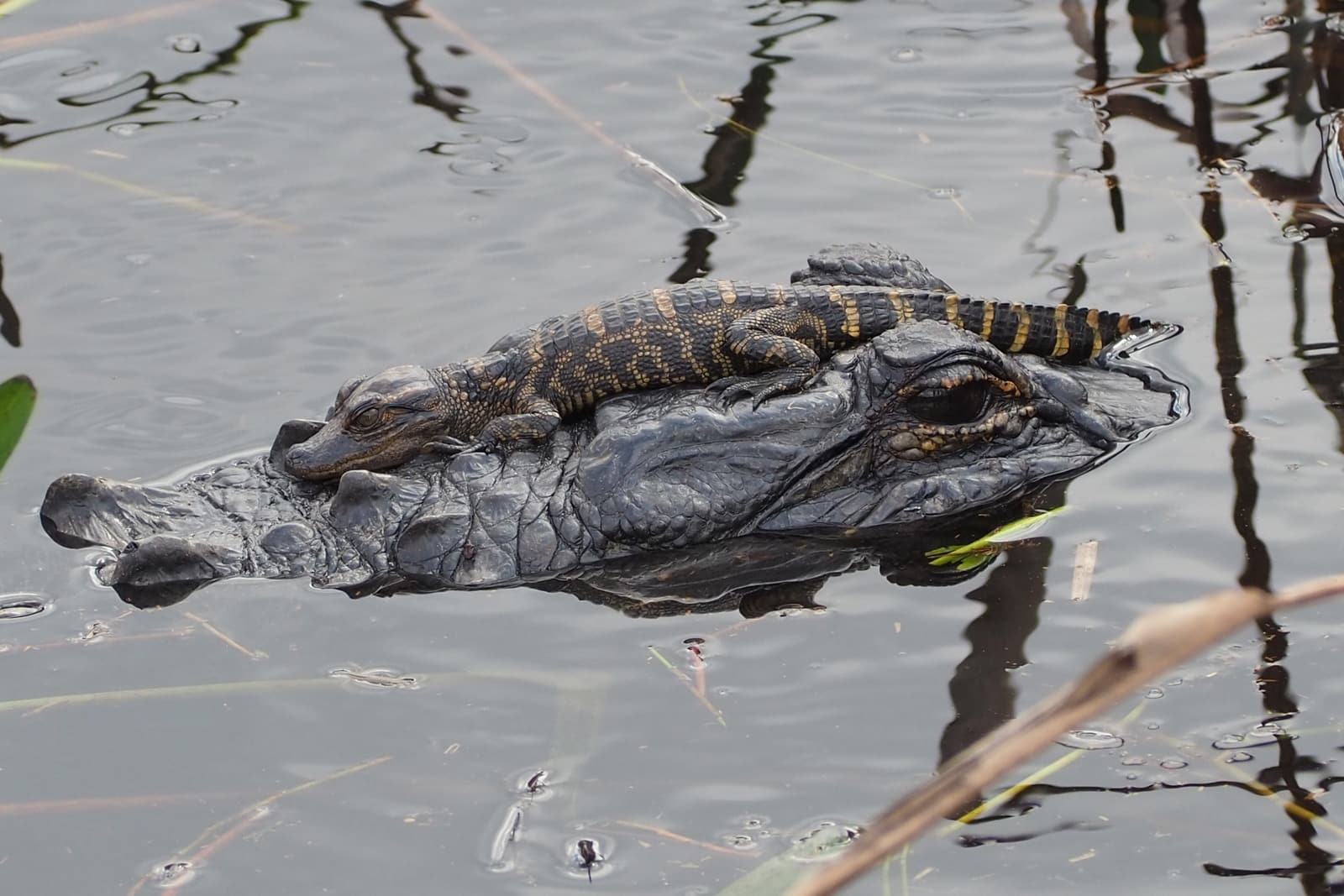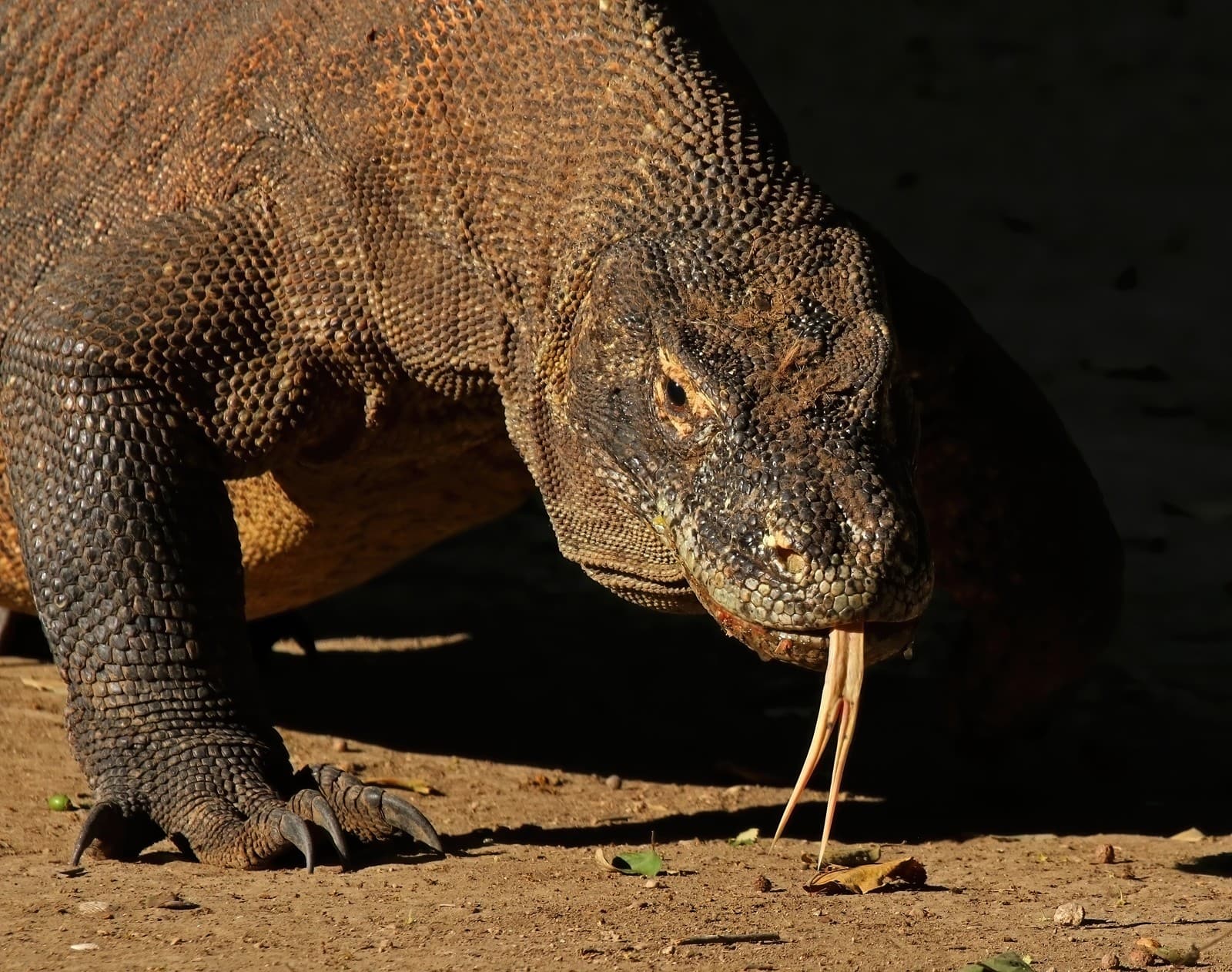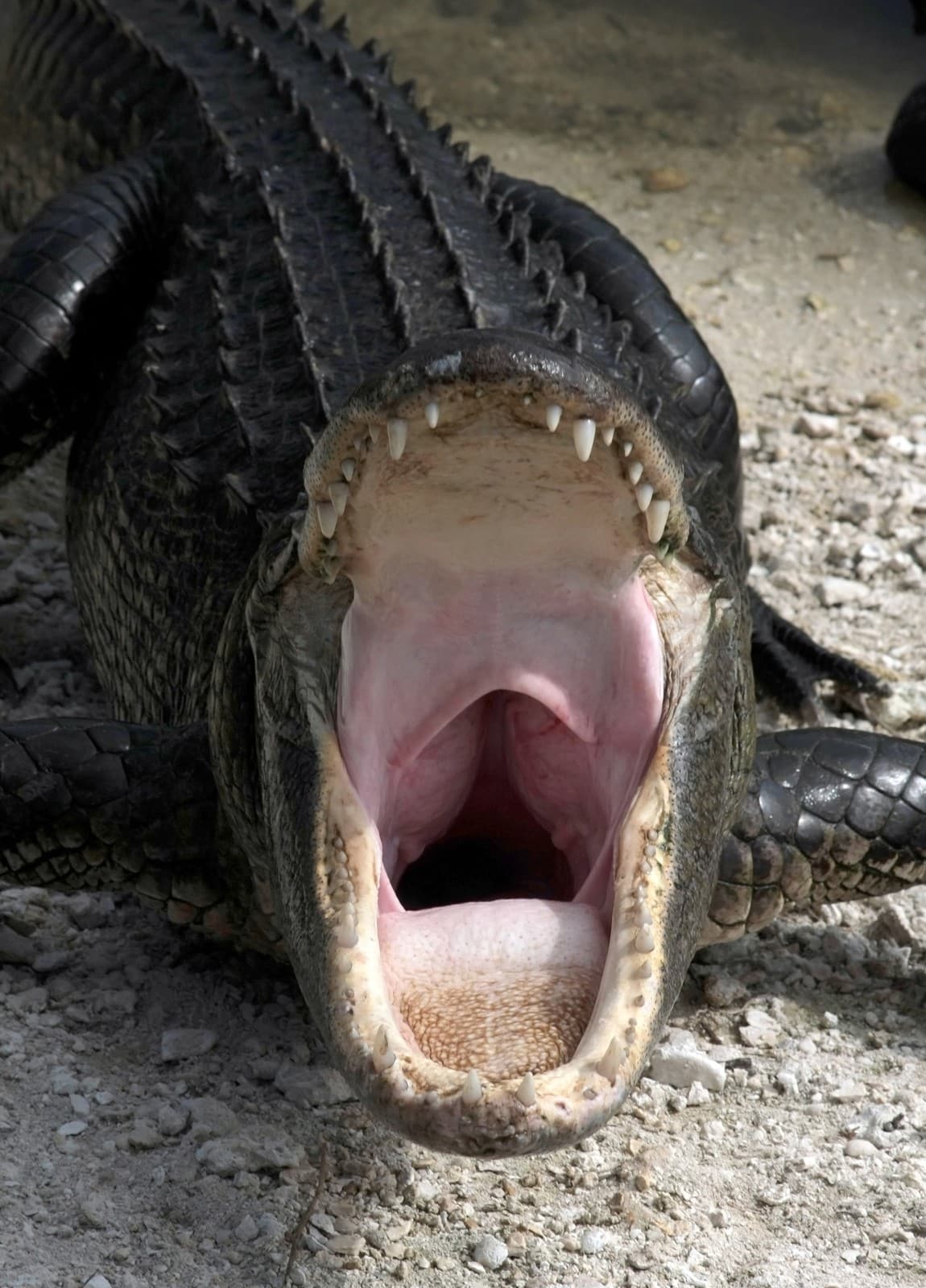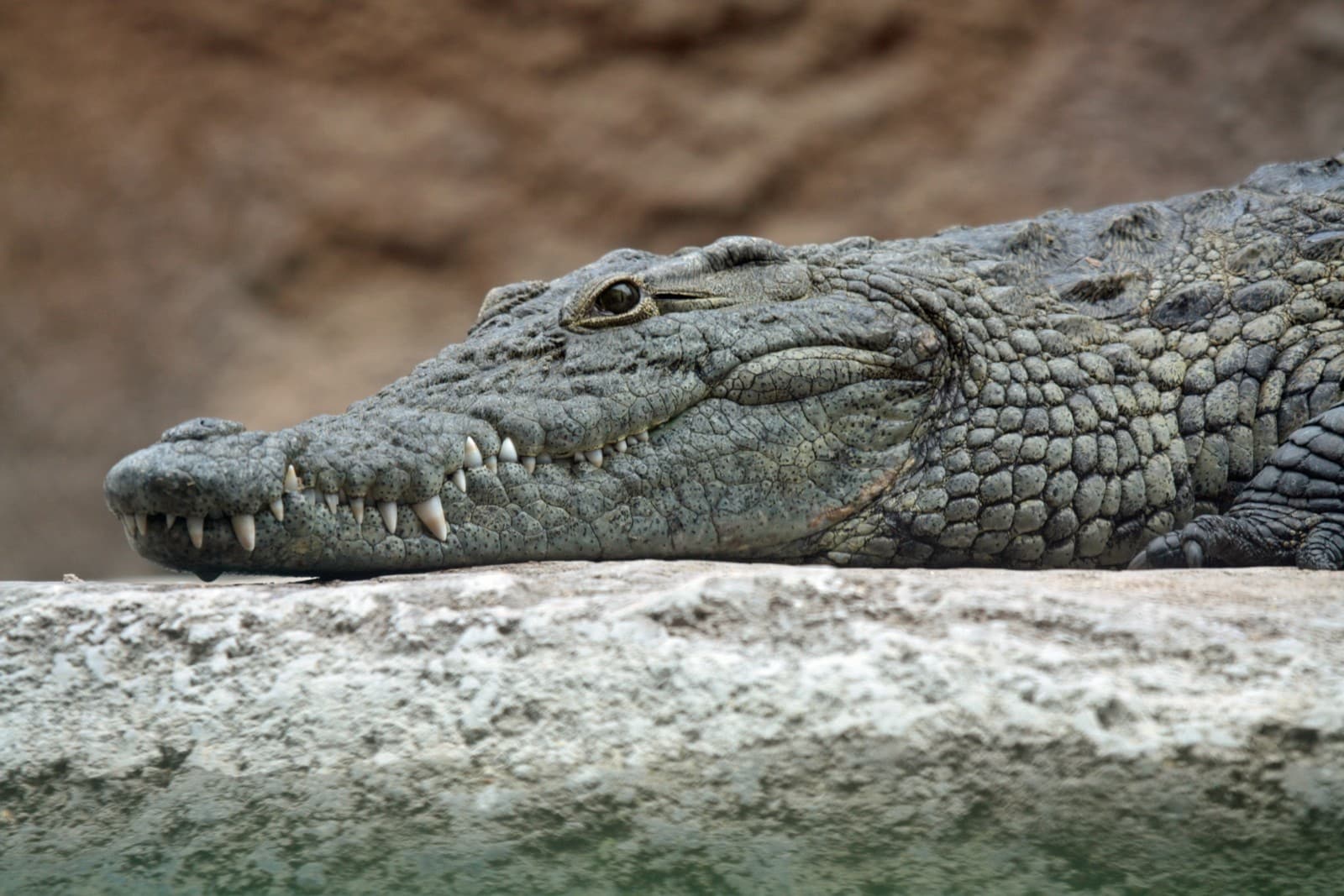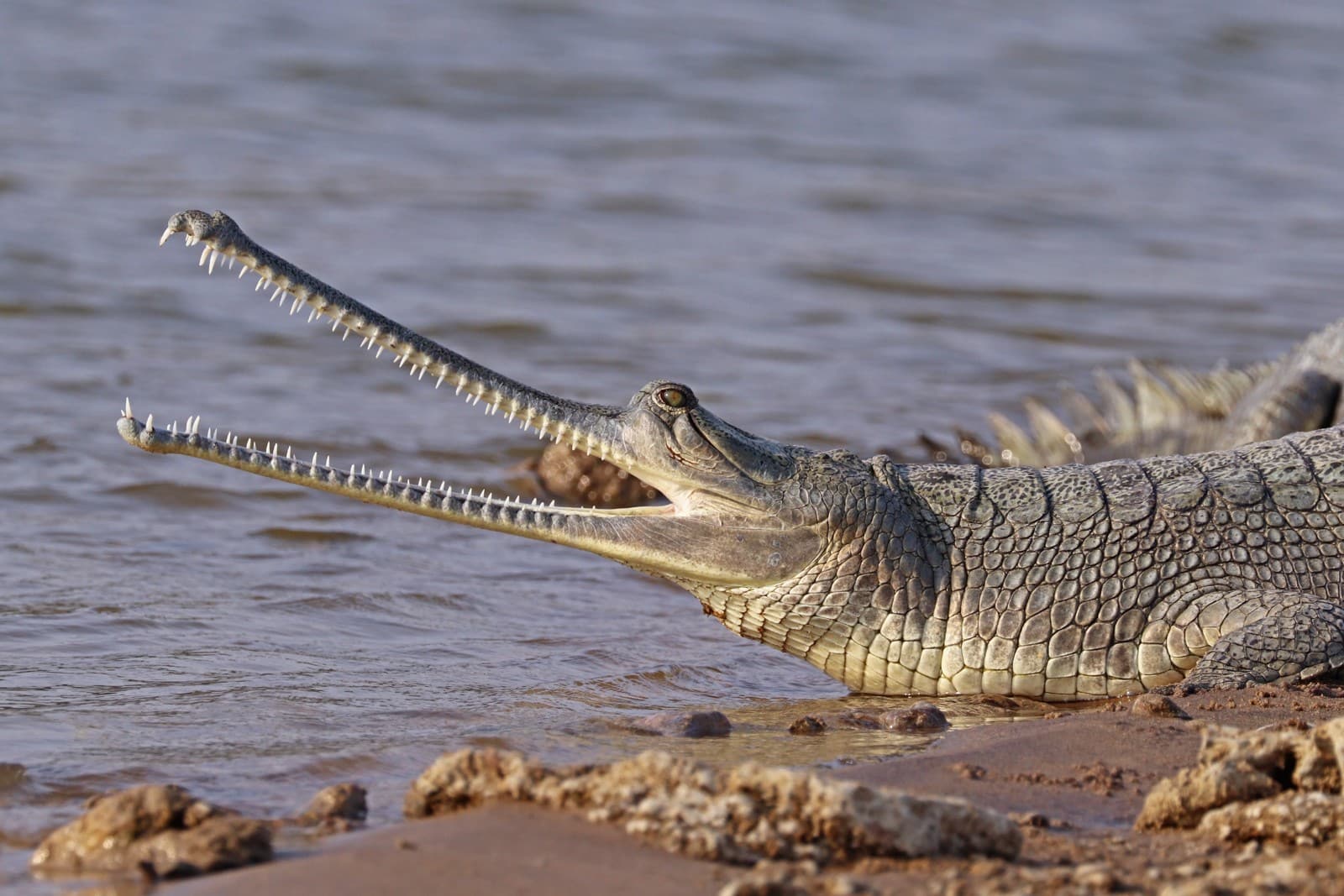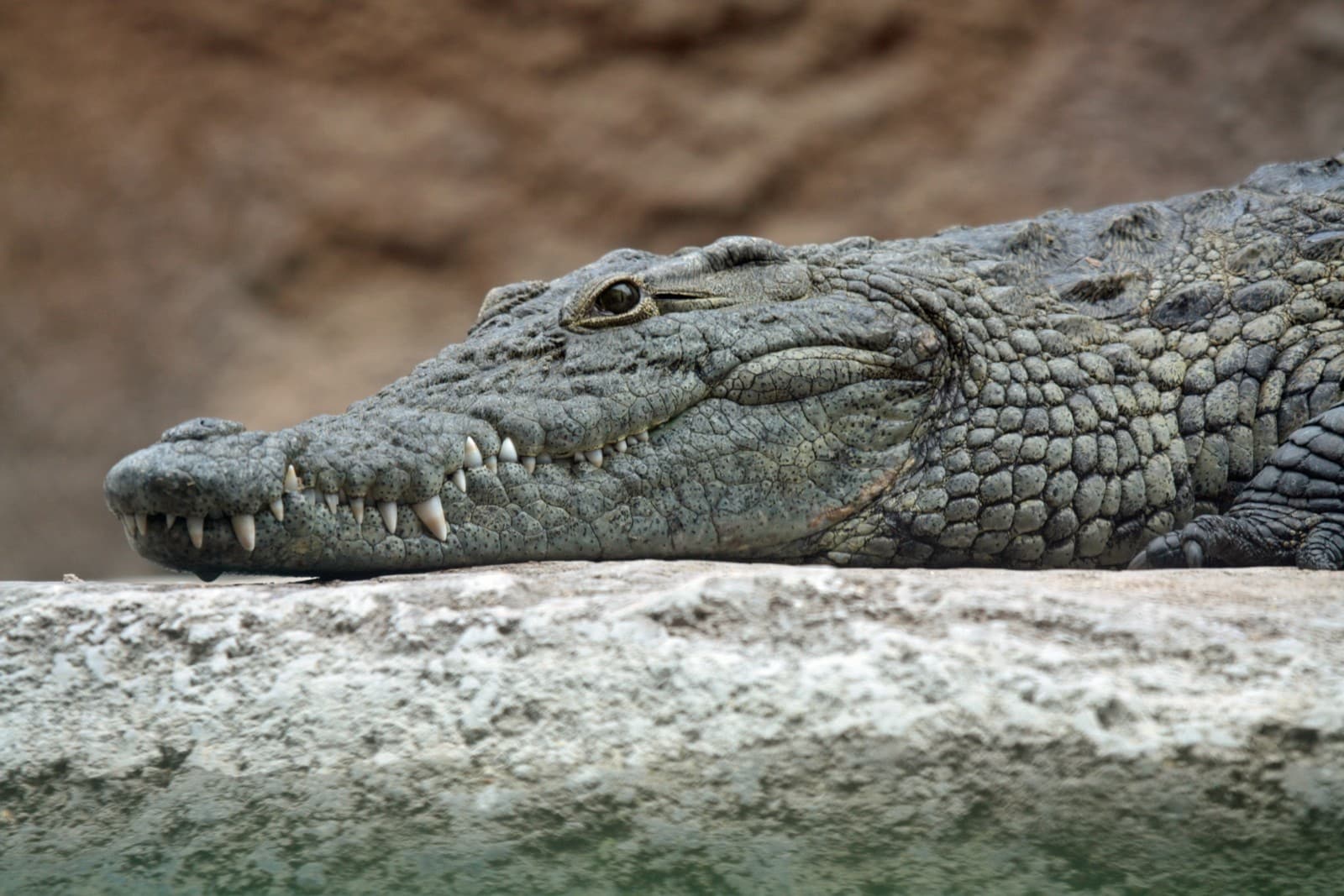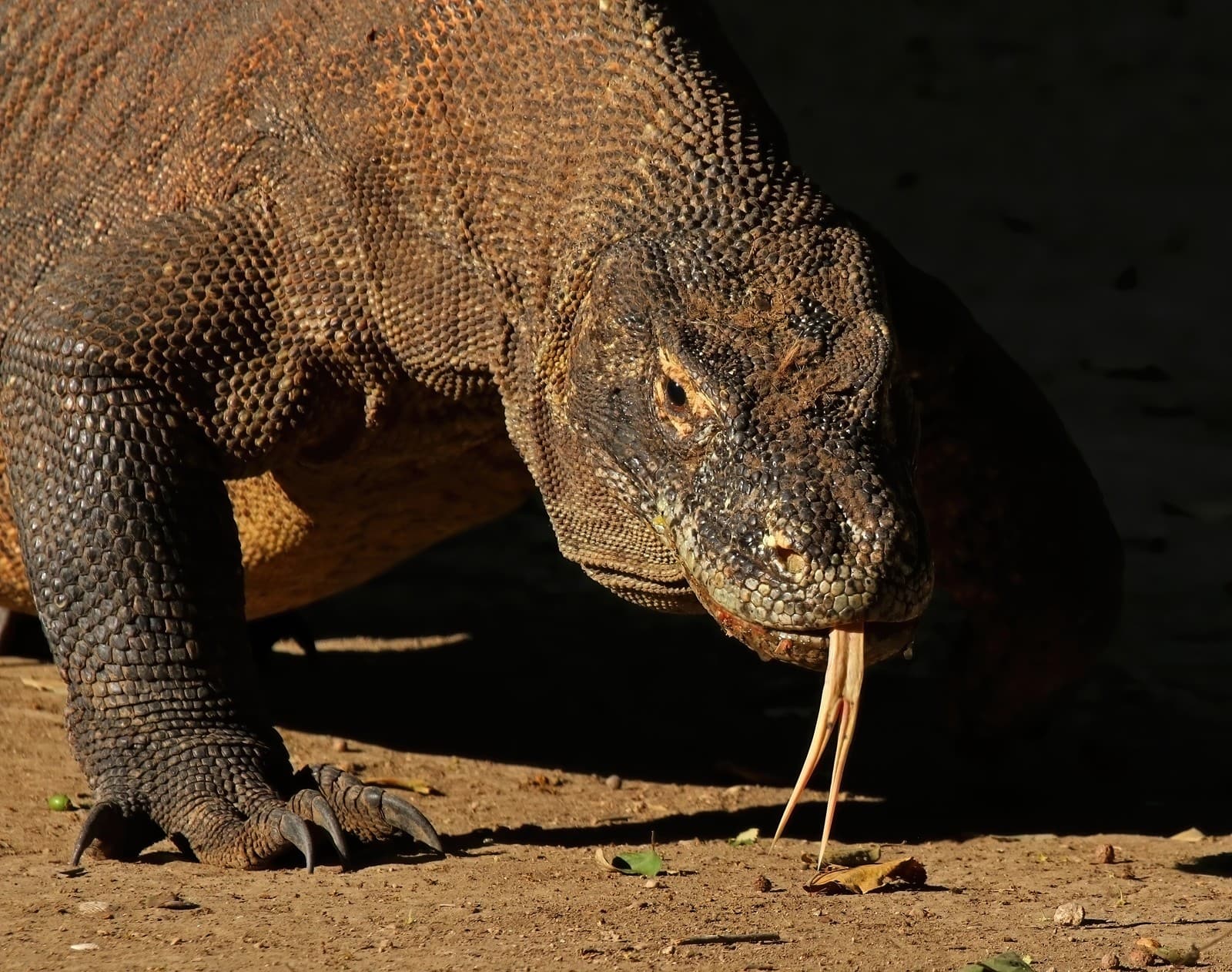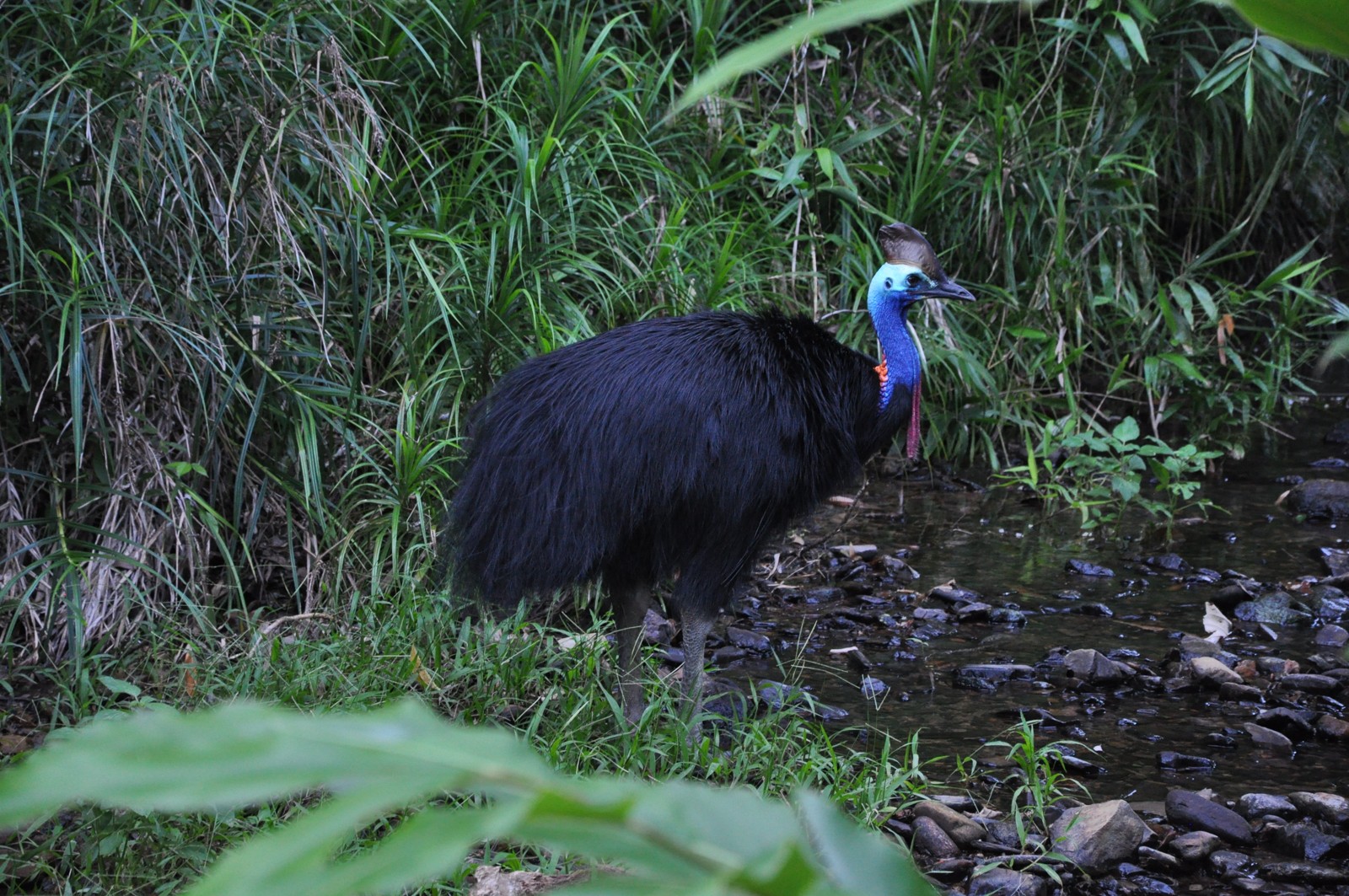Alligator vs Crocodile: A Complete Comparison
The key difference between alligators and crocodiles lies in their snout shape and tooth arrangement. Alligators have wider, U-shaped snouts with hidden teeth when their mouths are closed, while crocodiles display a more pointed, V-shaped snout with visible teeth, particularly their fourth lower tooth. American alligators typically reach lengths of 11-15 feet (3.4-4.6 meters), whereas Nile crocodiles can grow significantly larger, reaching up to 20 feet (6 meters) in length.
These ancient reptiles, despite their similar appearances, have evolved distinct characteristics over millions of years that affect everything from their habitat preferences to hunting strategies. Understanding these differences isn’t just academic curiosity – it’s crucial for wildlife conservation efforts and human safety in regions where these apex predators reside.
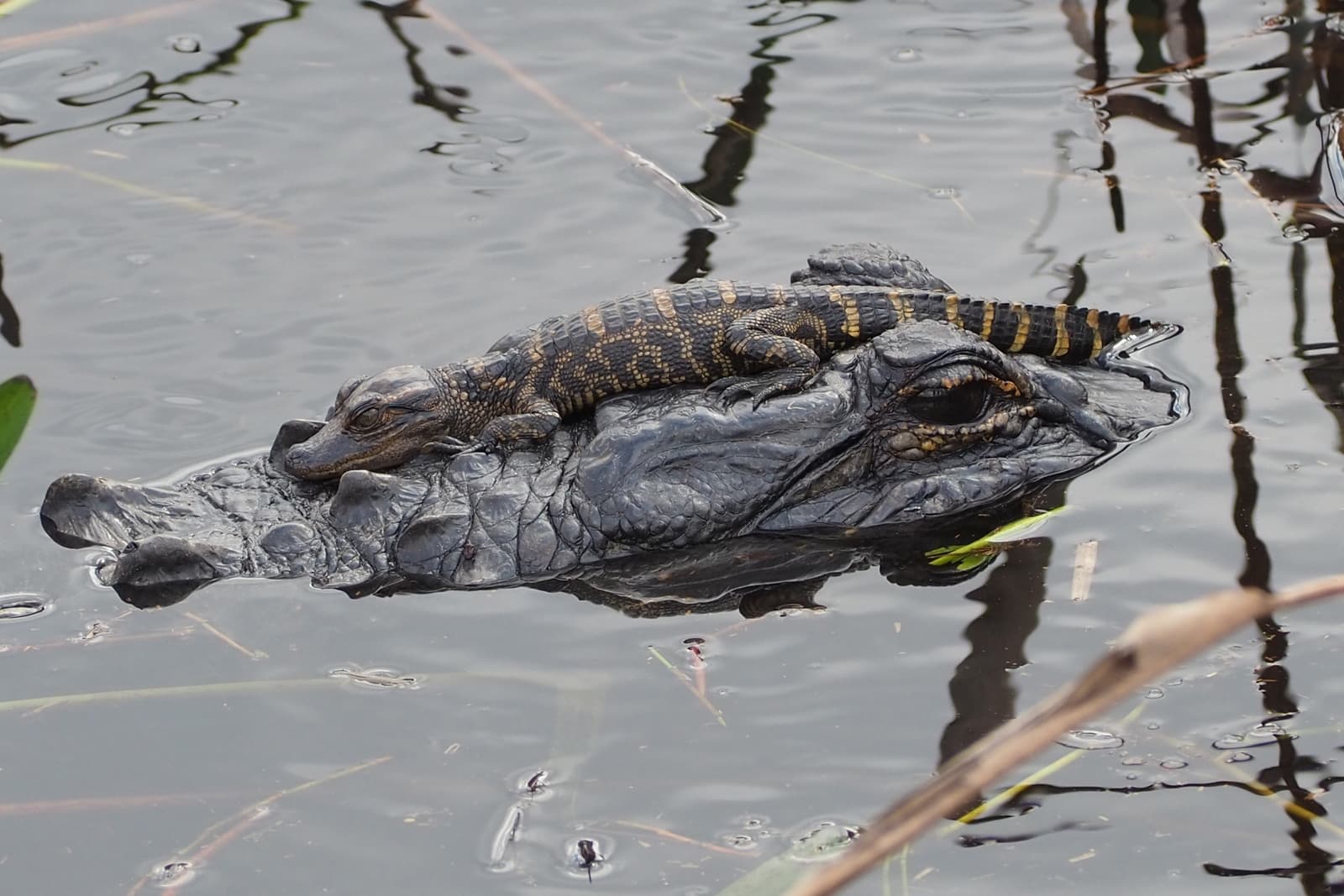
© Zygy / CC0
This American alligator demonstrates the classic U-shaped snout and darker coloration characteristic of the species. Note how the teeth remain hidden when the mouth is closed, a key identifier when comparing alligator vs crocodile specimens.
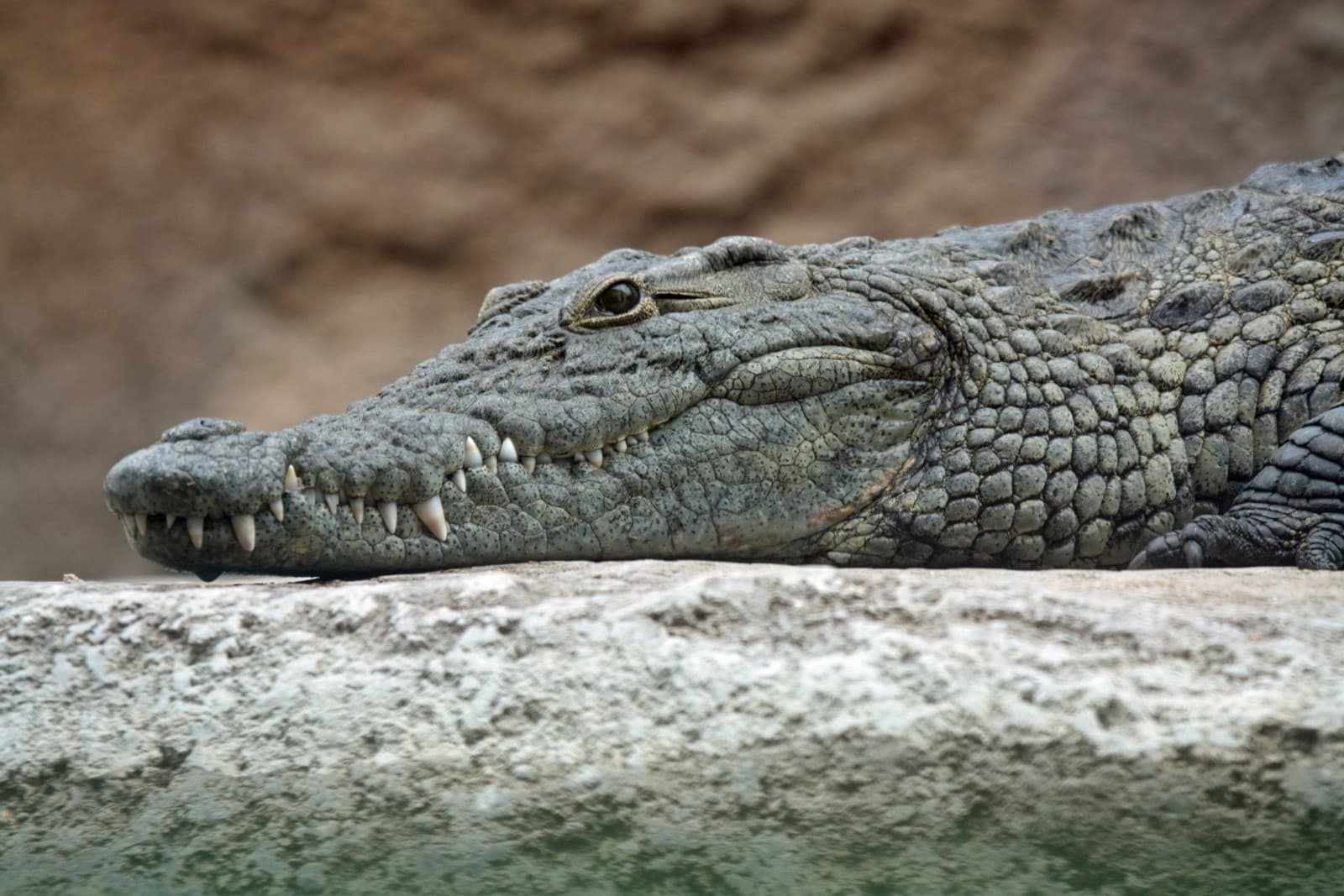
© Leigh Bedford / CC BY 2.0
The Nile crocodile exhibits the species’ distinctive V-shaped snout and visible teeth, particularly noticeable when comparing alligator vs crocodile jaw structures. The lighter coloration and rougher scales are typical crocodilian features.
Key Differences Between Alligators and Crocodiles
| Feature | Alligator | Crocodile |
|---|---|---|
| Snout Shape | U-shaped, wider | V-shaped, pointed |
| Teeth Visibility | Hidden when mouth closed | Fourth lower tooth visible |
| Size | 11-15 feet (3.4-4.6 m) | Up to 20 feet (6 m) |
| Habitat | Freshwater, brackish water | Fresh, brackish, and saltwater |
| Salt Tolerance | Limited | High (special glands present) |
| Color | Dark gray to black | Olive green to brown |
Habitat and Distribution
Alligators and crocodiles have evolved to thrive in different environments. Alligators primarily inhabit freshwater environments like swamps, rivers, and lakes, with only brief ventures into brackish water. The American alligator’s range extends from North Carolina to Texas, while Chinese alligators are found only in eastern China.
Crocodiles, equipped with specialized salt-secreting glands, can survive in both freshwater and marine environments. Saltwater crocodiles range throughout Southeast Asia and Australia, while Nile crocodiles dominate African waterways. This adaptability has allowed crocodiles to colonize a much broader global range than alligators.
Behavior and Hunting Strategies
While both species are ambush predators, their hunting techniques differ significantly. Alligators rely more on crushing power, using their robust U-shaped jaws to overpower prey quickly. They can exert a bite force of up to 2,980 pounds per square inch (PSI).
Crocodiles typically employ a “death roll” technique more frequently than alligators, spinning rapidly to tear prey apart. Their bite force can reach an astounding 3,700 PSI, making them the strongest biters in the animal kingdom. Both species are opportunistic feeders, but crocodiles generally display more aggressive territorial behavior.
Size and Strength Comparison
When comparing alligator vs crocodile size, crocodiles generally grow larger:
-
American Alligator:
- Males: 11-15 feet (3.4-4.6 m)
- Weight: 500-1,000 pounds (227-454 kg)
-
Nile Crocodile:
- Males: 16-20 feet (4.9-6 m)
- Weight: 1,000-1,650 pounds (454-748 kg)
Conservation Status and Threats
Both species face significant challenges from habitat loss and human conflict. The American alligator represents a rare conservation success story, recovering from near extinction to “Least Concern” status. However, many crocodile species remain endangered, particularly the Chinese alligator and Philippine crocodile.
Climate change poses new threats to both groups, potentially affecting nest temperature-dependent sex determination and habitat availability. Conservation efforts focus on habitat protection and reducing human-wildlife conflict through education and management programs.
Frequently Asked Questions
Which is more dangerous to humans?
Statistically, crocodiles pose a greater threat to humans, with Nile and Saltwater crocodiles responsible for hundreds of attacks annually. Alligators, while still dangerous, are generally less aggressive toward humans and account for significantly fewer incidents.
Can alligators and crocodiles interbreed?
No, alligators and crocodiles cannot interbreed. Despite their similar appearance, they belong to different families that diverged over 80 million years ago, making hybridization impossible.
Who would win in a fight?
When comparing similarly sized specimens, a crocodile would likely prevail due to its more aggressive nature, stronger bite force, and generally larger size. However, such encounters rarely occur in nature as these species typically inhabit different regions.
How can you tell the difference at a glance?
The quickest way to distinguish between an alligator and crocodile is to observe their teeth when their mouth is closed. If you see the fourth lower tooth, it’s a crocodile. If all teeth are hidden, it’s an alligator. Additionally, crocodiles typically display a lighter, more varied coloration compared to the darker alligator.
